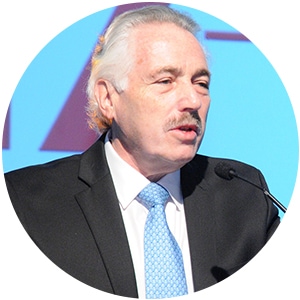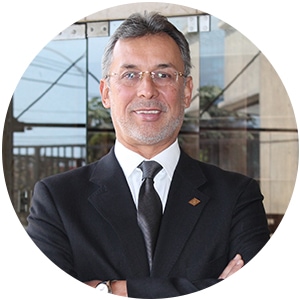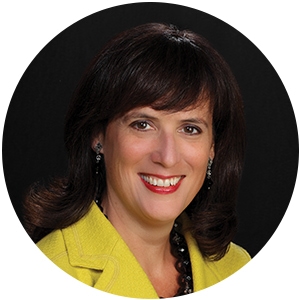Development banks vie with their commercial counterparts to support the growth of regional economies, and especially to step in when commercial banks cut the oxygen supply.


When Latin American governments launched their national development banks—some more than a century ago—their mission was to provide financing that would spark economic growth. With such institutions taking a countercyclical role during the region’s various financial crises, offering credit when commercial banks turn cautious, they continue to gain customer loyalty and market share. Competition between development and commercial banks is heating up.
Meeting in the Chilean capital of Santiago in late May for their annual assembly, members of ALIDE, the association of development banks from throughout Latin America and the Caribbean, discussed whether development banks could remain profitable while maintaining their social role. Bankers say these are not mutually exclusive concepts and that development banks are becoming more like their commercial counterparts when it comes to business practices.
In fact, many state-owned Latin American development banks now operate as commercial banks as well. Banco de la República Oriental del Uruguay (BROU), Uruguay’s development bank, is also the nation’s largest and only locally owned retail bank. Speaking at an ALIDE event, BROU’s Adriana Rodriguez Cabrera said the bank does not receive government funds and instead contributes 50%–80% of its profits to the central government each year. “We have a more than 50% share of the financial products market and a high level of customer loyalty,” says Rodriguez, noting that half of the country’s economically active population are BROU customers. “We thought we might lose customers due to competition from international banks in 2014, but instead we gained 150,000 clients.”
In Chile, Banco del Estado is another example of this banking model. While it is government owned, it is autonomous and is banned from providing loans to government agencies or other state-owned businesses. By offering a full portfolio of products and by operating branches in remote areas where privately owned banks might not consider setting up shop, Banco del Estado has gained a 45% market share of all financial transactions.
TAKING ON MORE RISK

“In many countries, development banks provide longer-term financing than commercial banks,” says Edgardo Alvarez Chávez, ALIDE’s secretary general, based in Lima. “Development banks also offer ‘smart money’ because they not only issue credit, but also provide value-added services, including training. They must offer something else so they are not just lenders. That has a cost that comes out of a development bank’s operating margin.” Alvarez notes that commercial banks still offer services that not all development banks do, including letters of credit and overseas payments. He says he sees the two types of bank as being complementary.
“When there is a financial crisis, commercial banks cut oxygen flows,” says Jacques Rogozinski, director general at Mexico’s Nacional Financiera (Nafin) development bank and an ALIDE vice president. “There is generally a decline in demand for products due to lower purchasing power and to companies [that] cannot pay their debts; but the first thing commercial banks do is cut the flow of oxygen to these companies, thereby exacerbating the problem. Development banks step in and take on greater risk by offering credit in a countercyclical manner, helping avoid a worse economic impact.” He argues that were it not for Nafin guarantees, for example, commercial banks in Mexico would not likely lend to small and midsize enterprises (SMEs) due to their higher risk profile.
The Inter-American Development Bank (IDB) in Washington, DC, makes sure its projects support a “crowding in” structure, entering sectors where commercial banks are not involved, according to Juan Ketterer, who heads the Capital Markets and Financial Institutions division at the multilateral bank. Ketterer says national development banks should focus on “crowding in” instead of “crowding out,” with the latter involving direct competition with private-sector banks. Ketterer says that, unlike commercial banks, the IDB’s goal is not to generate profits but to have an impact on development.
“Each IDB project includes a cost-benefit analysis that measures the social benefit that the project can achieve,” says Ketterer. “Profit per share is measured in terms of the benefits to society. We are willing to make less money in exchange for increased social impact.” The IDB and national development banks often support projects in areas that commercial banks are only beginning to consider, including investments in energy efficiency and climate change mitigation.=
GETTING CREATIVE

In Guatemala, Luis Velásquez, president of Crédito Hipotecario Nacional (CHN), a state-owned mortgage bank, says the institution is working to attract a greater portion of the $8.1 billion in remittances from Guatemalans abroad, equal to some 12% of GDP. “What we are aiming to do is change the focus of remittances, so recipients don’t use them just for consumption or to pay debts, but instead convert at least 20% into investments that in turn spark development,” says Velásquez, a former economic minister. CHN offers low-cost 25-year mortgage loans that have caught the attention of Guatemalans abroad who want to acquire property at home. The bank also extends credit to SMEs using their work tools and equipment as assets to guarantee up to 80% of their loan value.
Development banks are looking more to capital markets for their own funding. “The possibility of raising capital on the domestic capital markets is becoming increasingly of interest for national development banks, requiring them to get credit rated and issue local bonds,” says Diana Smallridge, president and CEO of Canada-based International Financial Consulting. “Access to private capital via bond issues outside the local markets is often determined by investor demand and the credit rating sought by the national development bank and its stakeholders.”
Smallridge says regional banks benefit from diversity in ownership and geography, while national banks are often limited by the sovereign credit rating of their countries. “Investors and rating agencies see the benefits of risk mitigation when there is geographic, portfolio and sponsorship diversity,” she says.
ALIDE’s Alvarez says a key challenge for development banks, going forward, is the use of technology to spark greater financial inclusion. “Development banks have to find ways for more people and SMEs to have access to credit,” he says. “The push for financial inclusion should not only involve people, but also companies and municipal governments, which have to be bankable. Development banks will need to get more creative.”



